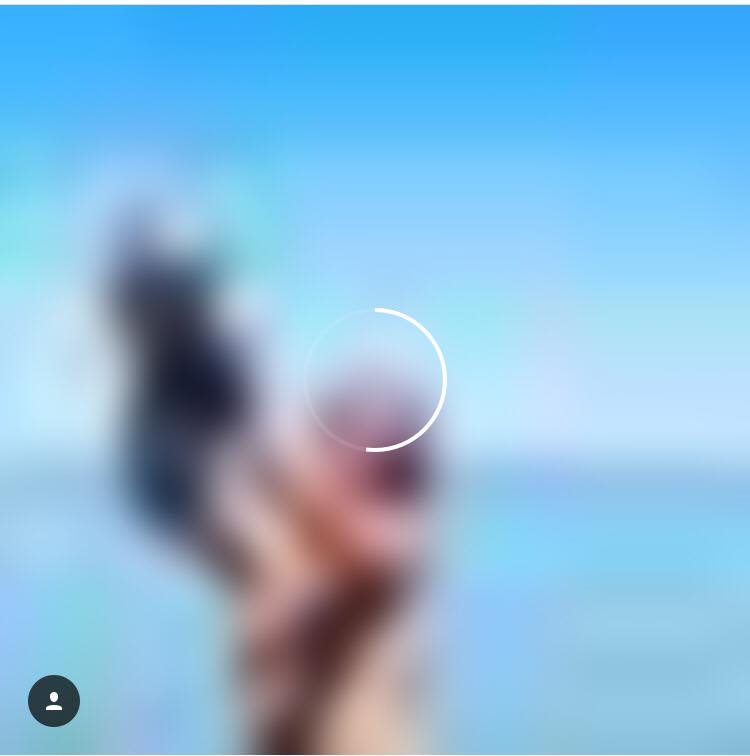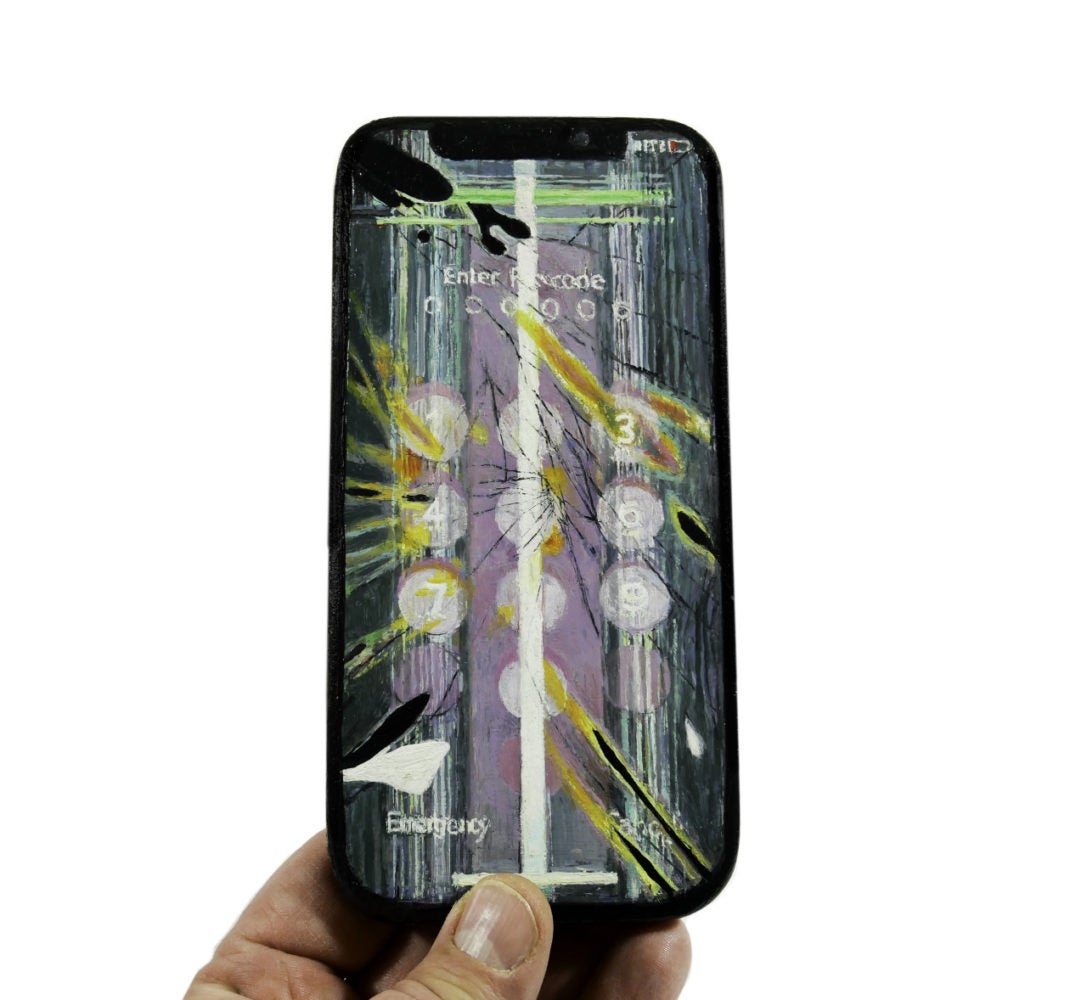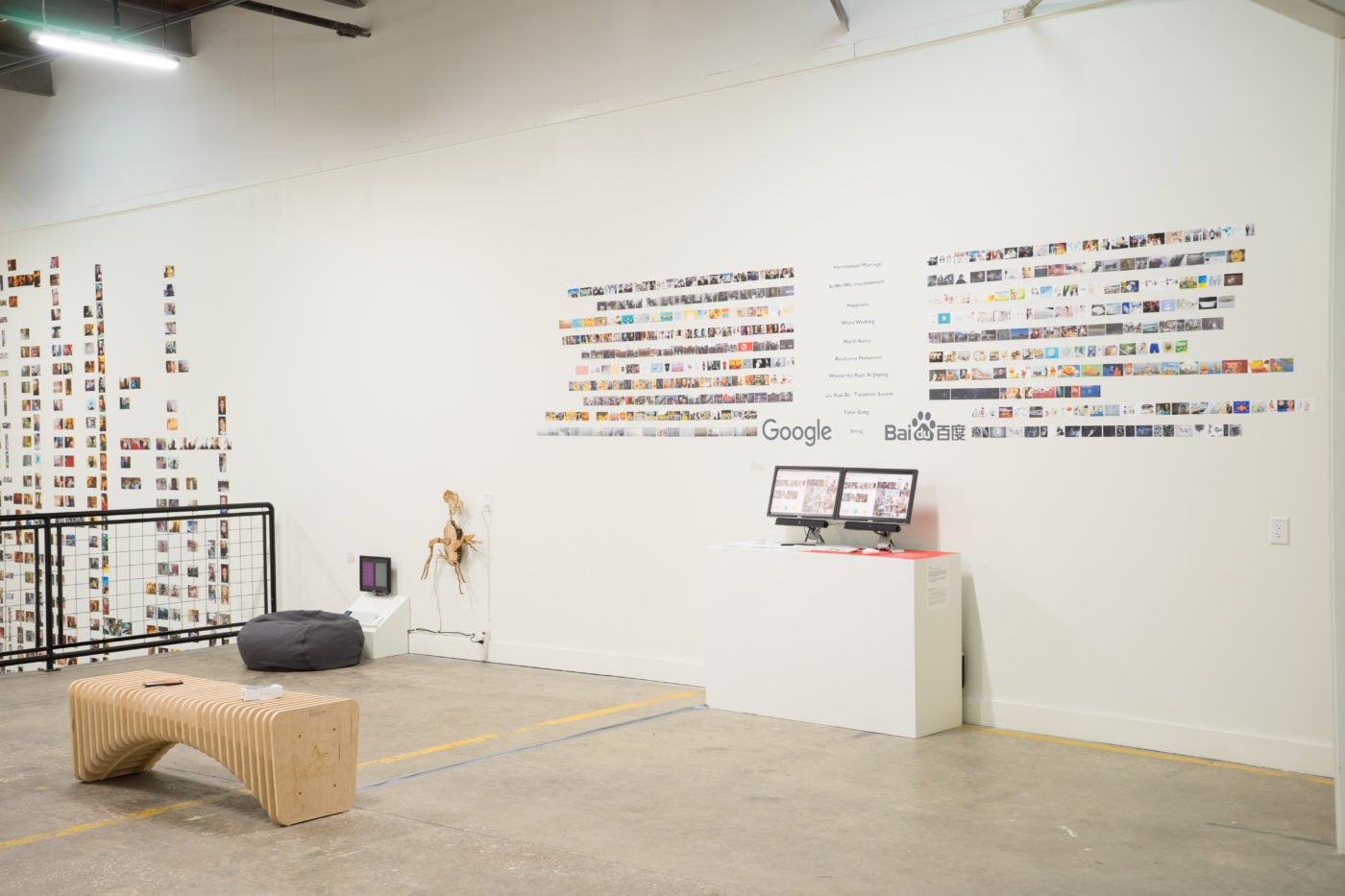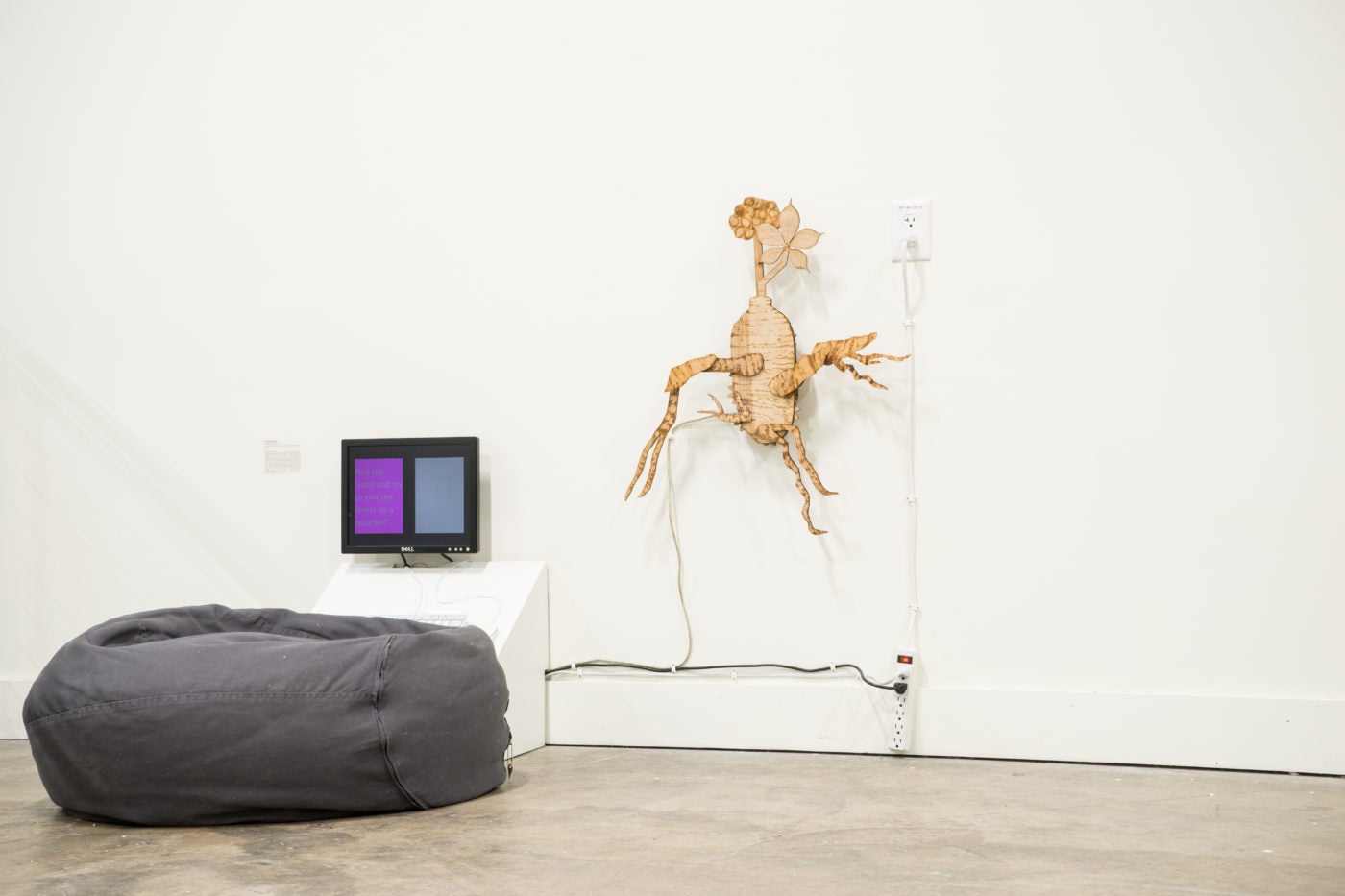
In the exhibition REDIRECT, the inherent risks of our social media landscape—exposure, error, loss—are reflected through installations by seven artists who approach contemporary technology both deliberately and cautiously. Presented by Asheville art space Revolve, the newly formed Greenville branch of the Tiger Strikes Asteroid network, and curated by Suzanne Dittenber, the exhibition frames artworks as technologies with the potential to combat the inevitable backlash of our digital lives. You are invited to click through webpages, search past firewalls, and intimately interact with the same tech you are being led to interrogate.

Anyone who has lost a phone in a public space or cracked a screen on a concrete floor can relate to the feeling that an extension of yourself has been lost or obliterated. The cracked screen or missing phone becomes a barrier between our real and digital lives. In their installations, artists Conrad Bakker and Jorge Lucero interrogate this projection of our identities. Bakker scatters wooden facsimiles of iPhones on pedestals, the floor, and the gallery bench, each one painted with the frozen images of obscured, cracked screens. In his Twitter Marginalia (2019-2020), Bakker changes our perspective on ubiquitous smartphone photos of beloved passages from books, reposted as images for safekeeping and re-tweeting. Lucero’s Slow Instagram (ongoing) abstracts the images we post and share. Obscuring our digital personas, Lucero’s images are frozen in the fog of a slow internet connection. The most potent critiques of Instagram often target our endless scrolling and the onslaught of images we face each day. Both installed in the gallery and hosted digitally on Instagram, Slow Instagram breaks down this preconception, asking us to consider the privilege of lightning-fast bandwidth while offering a meditative, soft-focus view on the world we photograph and share.
Beyond our feeds, our posts become personal archives, alternately curated or haphazard depictions of our lives for public consumption—but also our own private reflection. For those of us who have participated in social media since its beginning, the contrast between our online identities then and now can be startling. In her decade-old project 21 Days (2009), Janna Dyk looks back on how our social media identities have shifted over time. Dyk asked thirty-six people from six countries to send her both an image and a text for twenty-one days. In 2020, these exchanges have taken on a new life as a kind of time capsule containing evidence not only of the lives of these subjects but also of a particular moment in the history of social media and digital technology. The constraints imposed by technology—the images were taken using digital cameras rather than smartphones—and the artist—who directly received the images— appears to have affected how the subjects interacted with the lens and what they chose to focus on. In this way, 21 Days documents a now-distant time before the social and technical grammar of selfie culture had solidified into its present ubiquitous form.

Works by Ben Duvall and Joyce Yu-Jean offer valuable critiques of our archival and curatorial relationships with the web, raising even more questions about erasure. The tenuousness of digital archives is unraveled in Duvall’s Anti-Archive (2017), a year-long web performance in which Duvall uploaded images of fully realized artworks, quick sketches, text, and photographs. Whether a piece had taken years or moments to complete, it was subject to the same archival guidelines: these uploads would remain on the Anti-Archive for 24 hours before being deleted, accessible only through direct email with the artist. Lee’s Firewall Cafe (2016 – ongoing), created with software developer and artist Dan Phiffer, allows users to search across the American version of Google and the Chinese search engine Baidu. As data is collected from each search result, Firewall Cafe reveals striking cultural implications across both platforms while creating a tangible archive of internet censorship.
In the US, as the current administration and numerous hate groups have benefited from the laxity of codes of conduct on Facebook and Twitter, it is clear that—far from being neutral zones—social media platforms often sensationalize and further circulate messages of hostility and violence. Benjamin Grosser raises questions about the potential harm of such platforms with Safebook and Twitter Demetricator. Safebook (2018) is a web browser extension that hides all images, audio, and text from Facebook’s interface, neutering it as a last-resort intervention. Left with only boxes indicating statuses, ads, and videos (all of which are still available for interaction), you’re made all the more aware of how our minds have adapted to reading this social landscape. Twitter Demetricator (2018) provides another opportunity to mediate the anxiety of social media, removing the numeric value systems of likes, re-tweets, and followers that plague the platforms but arguably also drive our addictions to them. Grosser’s modifications offer new possibilities for using social media, but they also suggest that, in order to build a better internet, we must first deconstruct the status quo.

While REDIRECT immerses us in the digital landscape, the exhibition doesn’t neglect the physical world. In Victoria Bradbury’s Electronic Ginseng 2.0 (2017) the survival of the wild American ginseng plant is at stake in a simple choose-your-own-adventure-style game. Visitors sit on the floor in a bean bag chair, interacting with a screen that guides them through a simple decision: allow for a poacher to pick an immature ginseng plant, or intervene and allow it to mature. Following the click of a button, the animatronic ginseng plant mounted the wall beside you reacts suddenly with either horror or relief. A shriek or a sigh startles you back to reality, where you sit rooted on the ground.
Presented by Tiger Strikes Asteroid Greenville, REDIRECT remains on view at Revolve’s RAMP Gallery in Asheville (821 Riverside Drive) through February 24.




